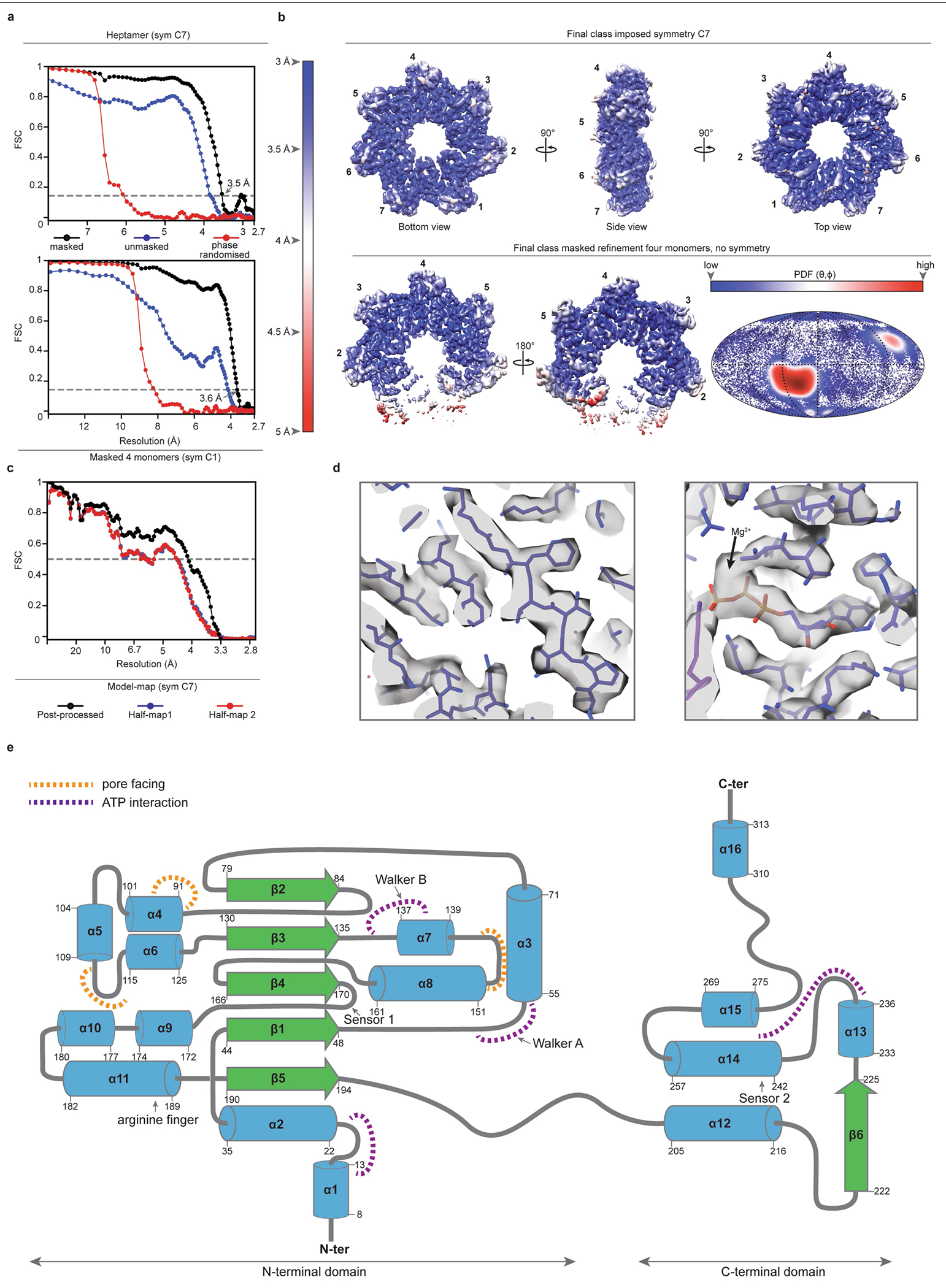Extended Data Fig. 5 |. Fourier Shell Correlation curves, local resolution, representative densities, and secondary structure diagram for TnsC.

a, Fourier Shell Correlation (FSC) curves computed for two independently refined half-maps of the final sub-class of particles before masking (blue), after masking (black), and after phase randomization (red). Curves are shown for the refinement with a C7 symmetry condition imposed (top) and for a masked refinement of the four best TnsC monomers without the imposition of any symmetrical constraint (bottom). The final resolution by the FSC-0.143 criteria is 3.5 Å for the symmetrical reconstruction and 3.6 Å for the masked refinement without symmetry impositions. b, Unsharpened maps coloured according to local resolution calculations, showing the symmetrical map in orthogonal orientations (top) and the masked map without symmetrical impositions (bottom). A Mollweide diagram with the Euler angle distribution for the masked map refined in C1 is shown (bottom right), coloured according to the density distribution. c, Model-map FSC curve (black line) and model overfitting test performed by randomly displacing 0.5 Å of the atomic coordinates of the final model and re-refining the displaced coordinates against half-map 1. The coincidence of the blue curve (FSC against half-map 1) with the red curve (FSC against half-map 2, not included in the refinement) guarantees the absence of overfitting in the original model. d, Representative final cryo-EM densities from the post-processed symmetrical map, with the refined model represented as sticks. The putative density for a Mg2+ ion is indicated by a black arrow (right). e, Secondary structure diagram of VchTnsC derived from the structural data. α-helices are depicted as blue cylinders, β-strands as green arrows and loops as grey traces. ATP binding regions, pore facing regions and hallmark sequences from the AAA+ ATPase family are indicated.
